55TH ANNUAL CONFERENCE, Las Vegas, USA, 14-18 March 2016WP No. 159Commercial Space OperationsPresented by TOC |
Summary
The purpose of the paper is to study the commercial space industry and its impacts on air traffic control system. It will have an impact on the way we are conducting our work on a daily basis.
Introduction
1.1 When we talk about space operations, the first thing technical people think of is satellites. They often affect our lives without even realizing it. Better weather forecasting saves lives (tornadoes, hurricanes, etc.) as well as helps people plan their activities. Environmental monitoring is greatly enhanced so that ozone damage, global warming, pollution and other damaging influences are known. Satellite imagery helps farmers increase their crop yield, police track illegal activities, military track terrorist activities, disaster response teams coordinate and plan, and gives access to overhead pictures of most of the surface of the earth.
1.2 While commercial applications for space have existed for several decades, the launch of commercial satellites has primarily been done as a state activity, utilizing segregated facilities and airspace. However, there has been a global shift away from government conducted launches as private companies have developed rocket technology. The commercial space industry has received increased attention recently demonstrating new rockets and successfully launching satellites for both governments and industry (SpaceX, Orbital ATK). Several companies see potential for space tourism and the retirement of the U.S. space shuttle program and the forecast retirement of the international space station creates new opportunities for commercial human space transport to replace these activities.
1.3 In the past space and space operations were the domain of individual states. It was perceived that only governments had the resources and technology to have a space program. That is no longer the case. Private companies may bring commercial space activities to states that don’t currently have space programs, bringing them into the community of space faring nations.
Discussion
2.1 Outer space
2.1.1 There is no consensus on what constitutes the boundary between airspace and outer space. The general notion of “air” and “space” is relatively well understood in terms of how mobility is undertaken in each. Air involves flight by either aerostatics (balloons and airships) or aerodynamic lifting surfaces such as wings and rotors (airplanes, sailplanes, and helicopters). Space involves flight by rocket-boosted vehicles whose flight paths are governed by ballistics and orbital mechanics.
2.1.2 There hasn’t been a common solution yet and is subject to extensive legal debate within the UN Committee on the Peaceful Uses of Outer Space (UNCOPUOS) Legal Sub Committee. It has been suggested that 100km (The Karman line) is the beginning of outer space but this has never been fully accepted as this is, in effect, determining a national boundary. Fédération Aéronautique Internationale (FAI), which is an international standard-setting and record-keeping body for aeronautics and astronautics accepted such definition as a basis for their work.
2.1.3 In order for a satellite to remain in orbit, it must have sufficient speed to counteract earth’s gravity. As a result, satellites in lower orbit must travel at faster speeds than those at higher orbits.
2.1.4 Low Earth Orbit (LEO) is the most congested band of space and in addition to satellites, it is used for things that we want to visit often with the Space Shuttle, like the Hubble Space Telescope and the International Space Station. It is convenient for installing new instruments, fixing things that are broken, and inspecting damage. It is also the only level where we can transport people, do experiments, and return in a relatively short time. Most satellites, the International Space Station, and the Hubble Space Telescope are all in Low Earth Orbit. This orbit is an orbit around the Earth with an altitude between 160 km (99mi) and 2000 kilometers (1,200mi).
2.1.5 Highly elliptical orbit (HEO) is an elliptic orbit with a low-altitude (often under 1000 kilometers (540 mi)) perigee and a high-altitude (often over 35786 kilometers (19323 mi)) apogee. Perigee is the closest point and apogee is the farthest. The ‘highly elliptical’ term refers to the shape of the ellipse, and to the eccentricity of the orbit, not to the high apogee altitude. If the orbit is very elliptical, the satellite will spend most of its time near apogee where it moves very slowly. Thus it can be above home base most of the time, taking a break once each orbit to speed around the other side.
2.1.6 If we want continuous coverage over most of the planet at all times, one approach is to have a constellation of satellites with orbits that are both different in location and time.
2.1.7 Another approach is to have a satellite always sitting over the same location on the planet. The way this is done is for the the orbital period of the satellite to be exactly the same as the rotation period of the Earth, one day. This is called a geosynchronous orbit (GEO). In this case, the satellite cannot be too close to the Earth because it will not be going fast enough to counteract the pull of gravity. For example, the space station, in order to stay in orbit, must circle the planet every 90 minutes.
2.1.8 In order for a satellite to remain in a GEO, it must be placed approximately 36000 km (22000 mi) above surface of the Earth. Launching a constellation to this stratum is considerably more expensive than LEO and they must remain in a very confined area, without drifting too far from their assigned “slot” above the Earth, in order to provide the intended services.
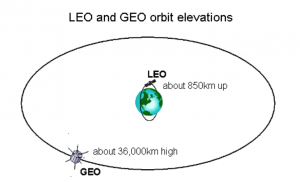
2.1.9 An orbital spaceflight is a spaceflight in which a spacecraft is placed on a trajectory where it could remain in space for at least one orbit. A sub-orbital spaceflight is a spaceflight in which the spacecraft reaches space, but its trajectory intersects the atmosphere or surface of the gravitating body from which it was launched, so that it does not complete one orbital revolution.
2.1.10 For example, the path of an object launched from Earth that reaches 100 km (62 mi) above sea level, and then returns to Earth, is considered a sub-orbital spaceflight. Some sub-orbital flights have been undertaken to test spacecraft and launch vehicles later intended for orbital spaceflight. Other vehicles are specifically designed only for sub- orbital flight; examples include manned vehicles such as the X-15 and Space Ship One/Two, and unmanned ones such as ICBMs and sounding rockets.
2.2 Commercialization of space
2.2.1 Commercial aerospace operations are reality. Private companies are providing the launch capacity for satellites and delivery of payloads to the International Space Station. In addition, companies are carrying out test flights and development of new vehicles is booming.
2.2.2 Many new generation sub-orbital space vehicles are designed, at least for part of their operation, as aircraft. Others, like the Virgin Galactic model, are designed with an aircraft as the launch vehicle and the spacecraft is launched from high altitude airspace. As technology has advanced the concept of different types of space launch systems are being developed with the goal of significantly reducing launch costs. These concepts include launches from “mother” aircraft ((Swiss Space System S3), high altitude launch station (Dark Sky) and “traditional operations” from airports (Rocket plane USA).
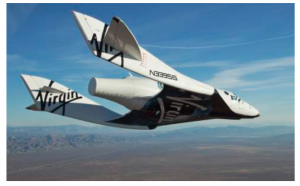
2.2.3 The first company to demonstrate commercial human spaceflight, Virgin Galactic, following its launch of Spaceship One in 2004, has continued development of Spaceship two which successfully completed its powered tests during April of 2013 and the first fare-paying passenger flight is predicted to occur in the near future. Space Ship Two is launched from a purpose built aircraft White Knight Two and flies the return leg as a glider. Over 600 individuals have purchased tickets or made deposits for suborbital flights with Virgin Galactic.
2.2.4 On 31st of October 2014 Virgin Galactic SpaceShip Two crashed during a rocket powered test flight in California. SpaceShip Two suffered a serious anomaly just after its rocket motor ignited for the test flight leading to the crash of the spacecraft and death of one pilot. Another pilot sustained serious injuries.
2.2.5 A recent analysis conducted by the Tauri Group for the FAA predicted that there would be a demand for about 370 seats in the first year of suborbital launch vehicle operation, growing to over 500 seats in the tenth year of operation. The suborbital-launch-vehicle industry is emerging and, as such, it is difficult to predict when initial flights will happen, as well as their rate of occurrence. The study also considered additional scenarios, which provide a range of roughly 200 to 1100 seats in the first year of operation with growth to between 250 and 1600 seats in the tenth year of operation.
2.2.6 One must remember that suborbital launch vehicles can hold up to 6 people so the number of launches to meet this demand could be up to a factor of six smaller than the seat demand. Furthermore, these initial suborbital flights would leave and return from the same location.
2.2.7 These projections demonstrate that, while the commercial space industry is expected to grow, the actual number of commercial-space launches and re-entries will remain small relative to civil aviation. There will likely be worldwide annual demand for thirty commercial orbital vehicle launches, and on the order of tens to hundreds of commercial space flights on suborbital vehicle launches. However, human space transport is only one segment of commercial space.
2.2.8 In early December 2013, SpaceX flew its first launch to a geosynchronous orbit (GTO) providing additional credibility to its lower prices, which have been published since at least 2009. The relatively low launch prices especially for communication satellites flying to GTO, resulted in market pressure on its competitors to lower their own prices. On 21st of December 2015 the SpaceX Falcon 9 rocket successfully landed upright on solid ground at Cape Canaveral, Florida, after traveling to space and back.
2.2.9 The first rocket ever to have gently landed and remain intact was New Shepard by Blue Origin Spaceflight Company, owned by Amazon founder Jeff Bezos. The rocket went up to 100,5 km, returned and landed on provided spot on 24th of November 2015.
2.2.10 The race to put the first man on the moon was led by the US and Russian governments, but today it is private companies that are driving the new space race.
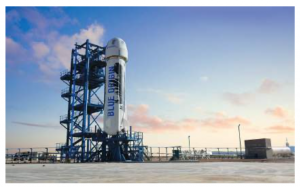
2.2.11 There is a new frontier emerging between aviation and space. The ambition is to connect the billions of people who currently have no access to the World Wide Web using high altitude, high endurance, unmanned aircraft. These developments further blur the lines between air and space.
2.2.12 The definition of an aircraft excludes rockets and capsules. But includes winged vehicles that derive lift from the atmosphere. If this is the case then Sub-orbital airplane operations, deriving support from the atmosphere for the largest part of their flight, are considered aircraft therefore the legal framework of ICAO would also apply to these vehicles.
2.2.13 Facebook is ready for full-scale testing of an Aquila drone that will provide broadband coverage in developing countries that currently lack internet access. Lack of rules is holding back the developments at the moment. For internet laser drones – the technology to be used – there is a ‘near-complete lack of any such regulation’. The first test flight of the Aquila, which has the wingspan of a Boeing 737 and could fly at altitudes of up to 90,000 feet, is expected to take place in 2016.
2.2.14 On the other hand Google is actively launching Project Loon. They launch balloons to float in the stratosphere. While they claim to be twice as high as airplanes and the weather, in fact the balloons operate just above 55,000 MSL. As there are many layers of wind, and each layer of wind varies in direction and speed, Loon balloons will go where they’re needed by rising or descending into a layer of wind blowing. By partnering with Telecommunications companies to share cellular spectrum they are going to enable people to connect to the balloon network directly from their phones and other LTE- enabled devices. The signal is then passed across the balloon network and back down to the global Internet on Earth.
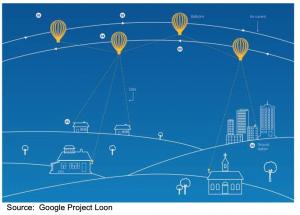
2.2.15 They should conform to the established standards otherwise they can cause chaos (trails in New Zealand in 2014). For example, they are required to report altitude, which they did, but using GNSS height. They are required to be equipped with ADS-B in Australian airspace – they were, but with low quality/power transponders which were filtered out or “undetectable” by the ATC system. The equipment has evolved as regulators have made their needs clear and current operations over the US use pressure based altitude reporting from detectable transponders .
2.2.16 Another Google project is Titan. The Titan team is building a new type of super lightweight solar-powered airplane that would be capable of hovering in one area of the stratosphere. This could provide a way to beam internet down to a targeted area on the ground below, supplement existing services with extra bandwidth, or providing access in an area that’s suddenly offline, like after an earthquake or other disaster. Loon and Titan could complement each other, providing a mesh of flying cell towers circling overhead. While the balloons can be tricky to steer and cover a wide area, Titan aircraft could be maneuvered to provide capacity to particular areas based on demand. In both instances, Google’s plan is to partner with carriers to provide overlapping service to people on the ground to provide seamless service.
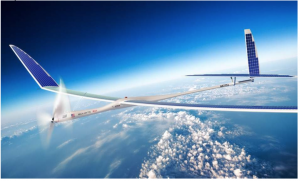
2.2.17 From the report of Committee on aviation environmental protection (CAEP) from August 2014, the commercial space industry is small relative to that of government space activities. There were 81 global orbital launches, with 23 (28%) being commercial. The rest were performed as government space launches for civil or military purpose.
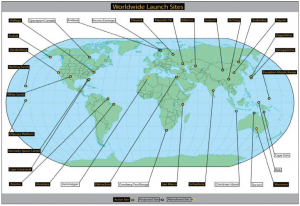
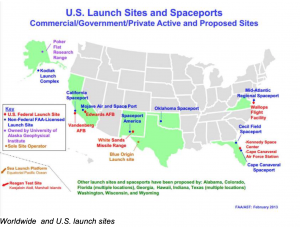
2.3 Integration of aerospace operations with ATM
2.3.1 When the Chicago Convention was adopted the extent of its applicability (in the vertical plane) was not established definitively. Rather, the definition of an aircraft “any machine that can derive support in the atmosphere from the reactions of the air other than the reactions of the air against the earth’s surface“ would seem to provide a limitation on the vertical application of ICAO’s responsibility i.e. to a height at which a machine stops deriving support from the atmosphere
2.3.2 ICAO is not restricted from addressing the safety risks posed by the operation of spacecraft through civil airspace. Article 37 of the Chicago Convention gives ICAO the ability to develop standards and recommended practices for “all matters in which such uniformity will facilitate and improve air navigation” enumerating specific categories, but concluding with “and such other matters concerned with the safety, regularity, and efficiency of air navigation as may from time to time appear appropriate.”
2.3.3 Modern commercial airliners typically operate at altitudes of up to 43000 ft (13000m) with exceptions (the ex Concorde) operating up to 60000 ft (18000m). Several types of business jets operate at higher altitudes up to 55,000. Flight Information Regions (FIRs) upper limit is in most cases set at or below 66000 feet or in some cases is described as “unlimited” altitude. This raises the question as to what is the operational status of this area of ‘airspace’ above the area of everyday air traffic operations. In the majority of cases an Air Traffic Control Service is provided within ‘controlled airspace’ up to a given level (which varies from country to country) above which no Air Traffic Control Service is provided. Services (very rarely utilized due to the small number of aircraft operations in the area) are limited to Information and Alerting only. However, the fact that airspace is “uncontrolled” only indicates that no ATC separation service is provided, it does not indicate that a state has no authority over the airspace.
2.3.4 The problem of delimitation of the boundary between airspace and outer space also raises questions as to the extent that the existing Air Traffic Management system can extend to. Therefore the area of applicability of the existing Air Traffic Management system is uncertain. For the area above ‘airspace’ no legal requirements yet exist for a ‘Space Traffic Management ‘system.
2.3.5 Today most space launch operation are taking place in segregated airspace, in many cases in low population areas or near the ocean. It is foreseen that in the future this will not be the case. In US there are numerous launching sites owned by private companies. As operations at commercial space ports increase they will need to be integrated into existing ATM systems. Safe and efficient integration of sub-orbital operations in non- segregated airspace will require close coordination between numerous bodies and should seek to achieve a common regulatory framework.
2.3.6 Nearly all launch and reentry operations are inherently international in scope. All vehicles capable of reaching orbit, and even most high speed, high altitude suborbital vehicles, can reach any location on the Earth. A launch or reentry operation conducted within any nation can potentially affect the airspace of any other nation, even on the opposite side of the Earth. There is a very strong possibility many future launches will affect airspace under the jurisdiction of multiple different nations during a single operation. Attempting to confine a launch or reentry to the airspace of a single nation may simply not be feasible for many nations and for many types of launch or reentry operations.
2.3.7 A variety of launch licensing systems have been (or are being) put in place in other parts of the world including countries like Malaysia, Russia, Sweden, Switzerland, and United Kingdom. They establish only system requirements and target levels of safety for ground personnel and for uninvolved public without differentiating between manned and unmanned systems; except that in the former case no flight termination system is required for dangerous deviations from the flight path. This poses unknown risks on one side for the aerospace vehicle and its passengers, and on the other side for aircraft, on or in its vicinity of his path, should a failure occur.
2.3.8 In the event of a catastrophic failure or, indeed, even the return to earth of space debris, there is an increased risk to aircraft as they are vulnerable to being hit by debris. The space shuttle Columbia re-entry breakup spread a wide trail of debris over major air traffic routes in the United States and raised safety issues with the possibility of an aircraft being hit by debris.
2.3.9 At present the number of launches of sub-orbital aerospace vehicles is limited to experimental activities and can be enabled by the use of segregated airspace and case by case flight authorizations. As previously stated some National Authorities have developed (or are developing) their national regulations and operational procedures, which are not necessarily aligned and, in some cases may be contradictory. This will result in fragmentation of the system.
2.3.10 The need for a common regulatory and operational framework is becoming more pressing. This is a similar situation to that of Remotely Piloted Aircraft Systems (RPAS) developments where rapid technological advancement and operational use occurred over the past decade. Delay in providing a global framework for these developments has resulted in an extremely fragmented system and is taking considerable effort to rectify the situation.
2.3.11 As stated previously, no legal requirements exist for management of space traffic. In addition, there are no global regulations relating to traffic management between aircraft and space flights. In some national space legislation there are procedures intended to ensure safe operation of space activities and separation assurance. However these procedures were not developed for providing an integrated Air Traffic Management system.
2.3.12 If the sub-orbital aerospace industry is to grow, segregated operations cannot be the long-term solution. However, to integrate into the existing ATM system will require the development of a new regulatory, operational and technical framework. This must ensure not only the safety of the sub-orbital passengers but also of the other users of the ATM system.
2.4 Integration issues
2.4.1 Existing separation standards and operating procedures are based on number of factors i.e. speed, height, equipment, etc. In case of sub-orbital vehicles these will be significantly different than what we have today. Many of the standards and procedures will require being revised or new ones developed. Some of the issues that may need to be addressed:
- FIR size – especially in Europe where FIRs are relatively small. Sub-orbital flights will fly with higher speeds than present aircraft and will remain within the confines of single FIR for just a fraction of time. In some cases frequency changes might become impossible.
- Separation – Existing standards might not be sufficient when one participant may not be subject to tactical intervention.
- Trajectory predictability – unmanned balloons flight paths are very unpredictable, particularly as they transit civil airspace.
- Route network structure – Route networks are generally based on ground navaids or PBN which is inconsistent with a ballistic trajectory used for sub- orbital operations.
- Vectoring and speed adjustments – the techniques we are using today may not be suitable; in addition to a ballistic trajectory, sub-orbital vehicles may require priority landing as many designs apply non-powered approach which means that “go around” is not an option.
- Surveillance update rate – existing surveillance systems may not be capable of successfully tracking aircraft flying with much higher speeds. Even today systems can have troubles tracking very fast military jets executing sharp maneuvers or high rates of climb.
- Equipment incompatibility – Sub-orbital craft and other high altitude operations may rely on technologies that are incompatible with aircraft systems. One example is GPS altimetry vs. barometric altimetry, which may provide inconsistent information when both are operating in the same airspace.
2.4.2 In the case of spacecraft designed to launch from traditional airports, the airports will have to adapt to the new type of traffic. Space ports have been developed as sites for rocket launching but are now designed with runways to accommodate Sub-orbital aircraft. ICAO provides design criteria for airports in Annex 14 but it is uncertain if this is applied to space ports under construction or planned. Many future operators of Sub- orbital aircraft are planning to operate from existing airports. This will raise a number of issues i.e. runway length, taxiway layout, landing aid facilities, etc. This is not an entirely new concept as many airport issues had to be addressed to accommodate new aircraft like the A380.
2.5 ICAO
2.5.1 Committee on aviation environmental protection (CAEP) has issued working paper No. 41 on Current state of emerging commercial space industry. It provides a brief overview of the current state of that industry and an examination of the potential environmental impacts from commercial space activities.
2.5.2 ICAO Separation and Airspace Safety Panel group has, on its meeting in May 2015, issued two important documents. First, is an information paper following the pilot project Google Loon presented by New Zealand. The paper pointed out the lack of Universal ATS Procedures for such operations within controlled airspace. They come to a conclusion that at the time when existing rules and procedures were developed such kind of heavy balloon operations were not envisaged. There is a need to develop rules and procedures for the future.
2.5.3 The second document is working paper dealing with Safety assessment methodologies for the future ATM environment. The purpose was how to integrate commercial launch/reentry operations into the airspace without adversely effecting current airspace users.
2.5.4 Current lateral separation standards used for launch and reentry SUA are simply the lateral separation standards used for aircraft. These standards ensure adequate separation between participating and non-participating aircraft within and outside, respectively, the Special Use of Airspace (SUA).
2.5.5 This means the separation applied is uniform around every edge. While this is appropriate for separating aircraft, the potential debris hazard from a launch or reentry is not uniform in every direction.
2.5.6 Proposed procedures for launch/reentry operations involve the creation of an “Aircraft Hazard Area,” a region of SUA that is closed to aircraft. This is done to ensure the safety of the uninvolved public during a launch/reentry operations. These areas are determined based upon aircraft impact probability contours, which represent the probability of an impact of an aircraft with debris capable of causing a casualty assuming that an aircraft is present in a particular volume of airspace.
2.5.7 These aircraft impact probability contours are computed with a computer program (Range Risk Analysis Tool). The air navigation service provider uses existing special use airspace classifications and rules, which were not designed for launch/reentry operations, to restrict aircraft from the Aircraft Hazard Area.
2.5.8 The FAA’s Office of Commercial Space Transportation (AST) proposes the creation of a new classification of SUA specifically for launch/reentry operations, so the procedures applied within this airspace may be tailored to meet the specific needs of launch/reentry operations.
2.5.9 Two other separation concepts recently proposed by FAA are Space Transition Corridors (STC) and Four-Dimensional Trajectory Deconfliction (4DT Deconfliction). These are described in the FAA’s Space Vehicle Operations Concept of Operations.
2.5.10 They would depend on the maturity and reliability of Launching Vehicle (LV)/Reentry Vehicle (RV) involved. They will also require associated separation standards for each type of LV/RV operation such as traditional orbital launches, fly-back operations (e.g., a powered booster landing), small suborbital vehicles, or hybrid vehicles.
2.5.11 The current approach for determining how much airspace to segregate for LV/RV operations (hazard volumes) focuses on mitigating the danger of falling debris to aircraft. It relies on calculating a probability of falling debris causing a casualty on an aircraft. Focusing on this metric is sufficient when using traditional Temporary Flight Restrictions (TFRs) to segregate LV/RV operations.
2.5.12 STCs are grounded solidly in method of blocking off airspace to protect aircraft from potential incursion or debris from failed flights. They would extend from the ground all the way up to 60,000 feet, the current agreed upon upper level of the National Airspace System (NAS).
2.5.13 The area on the ground of the STCs would require analysis, but would make use of a future Space and Air Traffic Management System (SATAMS) including a Decision Support Tool (DST) that would take vehicle characteristics into account when generating the size of the STC.
2.5.14 The volume of the STC can be minimized, it can be added dynamically into the system and removed quickly so as to minimize the impact to nearby air traffic. The STC would be created shortly before the planned departure time and then withdrawn once the vehicle has exited the NAS.
Conclusions
3.1 There is no consensus on what constitutes the boundary between airspace and outer space. It has been suggested that 100km (the Karman line) is the beginning of outer space but this has never been fully accepted as this is, in effect, determining a national boundary. However, the only issues that is solved through a vertical demarcation is the one of sovereignty, and whether a state is allowed to deny access to overfly.
3.2 The problem of delimitation of the boundary between airspace and outer space also raises questions as to the extent that the existing Air Traffic Management system can extend to. Safe and efficient integration of sub-orbital operations in non-segregated airspace will require close coordination between numerous bodies and should seek to achieve a common regulatory framework.
3.3 Today private companies i.e. Google, Facebook are driving the sub-space race. One of the ambitions is to connect the billions of people who currently have no access to the World Wide Web.
3.4 New types of launch vehicles for sub orbital flights may have an impact on airport operations and design.
3.5 Existing separation standards and operating procedures are not going to be sufficient for working with sub-orbital vehicles. Their performances are significantly different than of today’s aircraft. Many of the standards and procedures will require being revised or new ones developed.
Recommendations
It is recommended that:
4.1 This paper is accepted as information material.
References
Martin Griffin, “Integration of Aerospace Operations into the Global Air Traffic Management System” (November 5, 2014). Space Traffic Management Conference. Paper 28. https://commons.erau.edu/stm/2014/wednesday/28
Working Paper SASP/26 4-15 May 2015 WP/03 Launch/Reentry Operation Aircraft Hazard Areas.
Information Paper SASP/26 4-15 May 2015 IP/30 Separation Standards around Heavy Balloon Operations.
Daniel P. Murray and Megan Mitchell, Lessons Learned in Operational Space and Air Traffic Management, Federal Aviation Administration, Washington DC.
Scott Haeffelin, “Sub-orbital Spaceflight – An addition to our multi-modal transportation system” (November 13, 2015). Space Tra cManagement Conference. Paper 16. https://commons.erau.edu/stm/2015/friday/16


